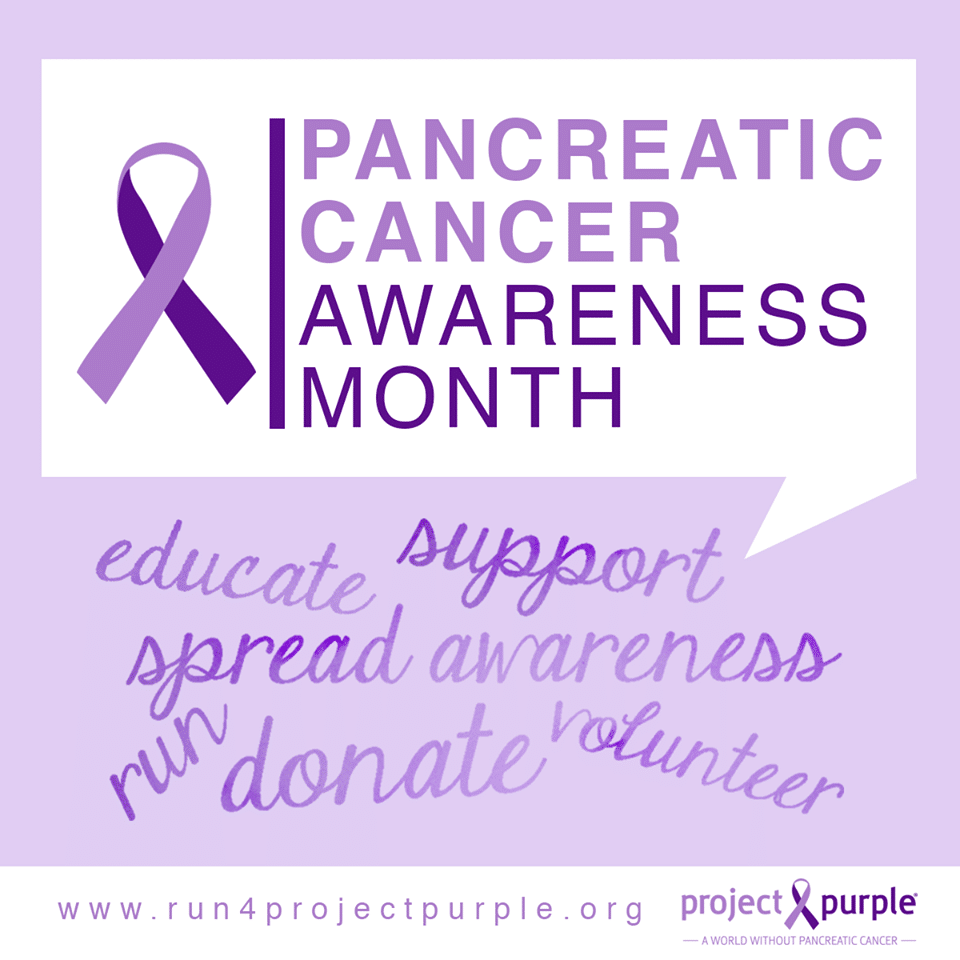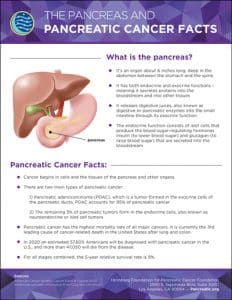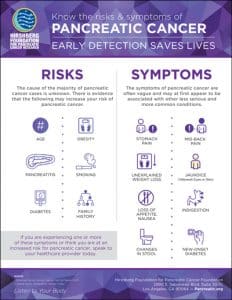November is Pancreatic Cancer Awareness Month



Pancreatic cancer has the highest mortality rate of all major cancers. For all stages combined, the 5-year relative survival rate is 12%. For the small percentage (15%) of people diagnosed with local disease, the 5-year survival rate is only 44%.
More than 90% of cases are pancreatic adenocarcinoma (PDAC), that develop in the exocrine tissue of the pancreas, which makes digestive enzymes.
The less common pancreatic neuroendocrine tumors (NETs), develop in hormone-producing endocrine cells, or islet cells. Neuroendocrine tumors often have a better prognosis and younger median age of diagnosis.
More than 90% of cases are pancreatic adenocarcinoma (PDAC), that develop in the exocrine tissue of the pancreas, which makes digestive enzymes. Treatment options for pancreatic cancer: Surgery, radiation therapy and chemotherapy are treatment options that extend survival or relieve symptoms, but seldom produce a cure. Surgical removal of the tumor is possible in less than 20% of patients diagnosed with pancreatic cancer because detection is often in late stages and has spread beyond the pancreas. Adjuvant treatment with chemotherapy (and sometimes radiation) may lower the risk of recurrence. For advanced disease, chemotherapy (sometimes along with a targeted drug therapy) may lengthen survival. Clinical trials are testing several new agents for their ability to improve survival.
Pancreatic cancer has the highest mortality rate of all major cancers. It is currently the 3rd leading cause of cancer-related death in the United States after lung and colon and expected to become the 2nd by 2030.
*Source for statistics: American Cancer Society: Cancer Facts & Figures 2023
“Exercise can lower the risk of developing pancreatic cancer and has the potential to improve physical fitness and quality of life in patients with the disease.”
Exercise can lower the risk of developing pancreatic cancer and has the potential to improve physical fitness and quality of life in patients with the disease.
Gupta P, Hodgman CF, Schadler KL, LaVoy EC. Effect of exercise on pancreatic cancer patients during treatment: a scoping review of the literature. Support Care Cancer. 2022 Jul;30(7):5669-5690. doi: 10.1007/s00520-022-06925-7. Epub 2022 Feb 21. PMID: 35190894.
Customized Exercise Programming – Pancreatic Cancer

